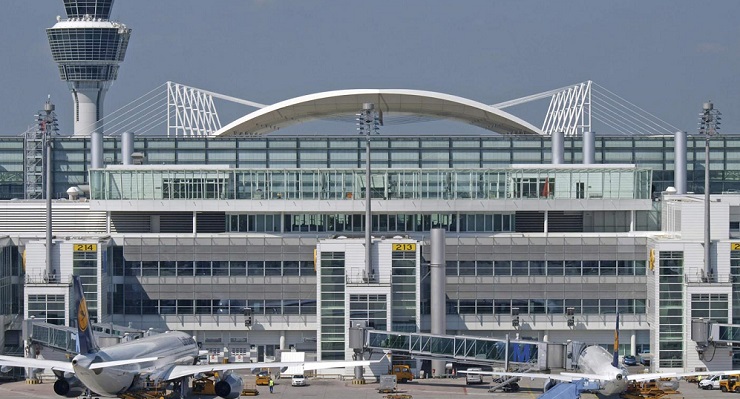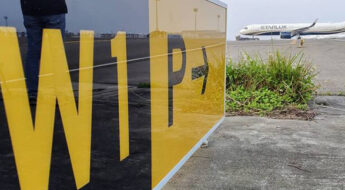
Nearly 20 airports in Europe have embraced A-CDM to boost efficiency and collaboration with airlines and other stakeholders. This two-part series provides insight on A-CDM’s evolution and reports on the positive impact it is having at large and small airports. Part 1 introduces A-CDM and discusses its rise in Europe. Part 2 covers several of the key outcomes that airports have reported.
Four Measurable Improvements from A-CDM Implementation
Despite being in place for only a few years at most facilities, airport-focused CDM is already delivering measurable improvements to all stakeholders.
A 2016 airport impact assessment by Eurocontrol found many positives among the 17 “fully networked” A-CDM airports at the time. In all cases, benefits were quantified by demonstrating improvements at least one of three metrics:
- Arrival predictability;
- Off-block predictability (signified by comparing A-CDM’s Target Off-Block Time, or TBOT, with Actual Off-Block Time data); and
- Takeoff predictability.
While the big-picture changes to airports that come from improving these metrics can be described in many ways, they fall into four general categories:
- Improved decision-making
- More efficient airport resource management
- Reduced surface congestion
- Opportunities to improve safety
Improved Decision Making
The core part of any CDM program is empowering stakeholders to make smarter decisions in a dynamic environment. Knowing an aircraft has left its departure airport late or is experiencing delays enroute has ramifications at the destination airport and beyond. Sharing this information in real-time minimizes negative ramifications.
“For example, flight A that has already experienced a significant delay may be able to swap its departure time with flight B that is on-time or early in order to minimize the impact of the delay,” an Airport Cooperative Research Program (ACRP) report by the U.S. Transportation Research Board explains. “The information on which such a decision would be based is typically known to the flight operator, while execution of the decision may fall within ATC’s authority. Collaboration is the key to recognizing and acting on such opportunities involving multiple parties.”
In general, A-CDM airports experience “fewer instances where flights are not met on-stand by personnel waiting to rotate the aircraft,” the assessment found. “Coupled with improved stand allocation robustness, improved arrival predictability enables resources to be positioned on the right stand at the right time.”
Having more accurate aircraft movement times also helps service providers such as ground handlers, who can allocate their resources more efficiently. This ensures that the flights which are ready are being handled, regardless of the original scheduled departure or arrival times.
More Efficient Airport Resource Management
One of the most immediate ramifications of more intelligent, collaborative decisions is better use of resources. At Oslo Airport, the first full year of implementation saw a dramatic improvement in stand stability–750 fewer stand changes for flights that had passed the final approach fix, the Eurocontrol assessment found. “This has resulted in an improved passenger experience and fewer instances of outbound delay due to late passengers at the gate,” the report says. Frankfurt reported “notable improvements in stand stability immediately after the update of their taxi-in time estimates in 2015,” Eurocontrol notes.
The benefits go beyond getting aircraft into and out of stands with better predictability. The positive ramifications for ground-handlers, noted previously, include improved resource allocation.
De-icing service providers also improve operations thanks to more accurate aircraft movement information. Officials at Munich Airport credit the integration of de-icing targets and milestones into its program as a primary reason for a 5% reduction in flight cancellations between 2005 and 2009–an operating cost avoidance of €2 million, the Eurocontrol assessment reported.
Helsinki’s A-CDM program includes a time-stamp, TOBT de-ice, that signifies aircraft are ready for de-icing. This helps de-icing contractors prioritize their movements based on real-time information that can be updated.
Reduced Surface Congestion
While A-CDM helps airports in many ways, arguably the most significant is reduced surface congestion. This is achieved primarily through reduced taxi times—which are the most oft-cited benefits of A-CDM. The assessment found a taxi-time improvement average in the range of 15 seconds to 3 minutes per departure.
Helsinki’s experience, as documented in Eurocontrol’s assessment, presents an informative case study. Helsinki, the fifth airport to fully implement a program, in 2013. Among the documented changes in the program’s first three years:
- A 10% reduction in average off-block delay time, to 9 minutes per departure;
- An 8% decrease in taxi-out times, to 8.2 minutes; and
- An 80% improvement in take-off-time accuracy, to 2 minutes per flight.
By implementing A-CDM elements such as TOBT and Target Start-Up Time (TSAT), aircrafts do not move until the system is ready to accept them. This helps cut down on taxi times and ground congestion, which has the added plus of reducing emissions, which airports can claim toward their own environmental targets.
The overarching result is more accurate planning, which means aircrafts are spending less time between the stand and their departure clearance. This saves fuel, lowers emissions, and creates a more predictable experience for operators, service providers, and passengers.
Improved Safety
One significant advantage that A-CDM offers is the opportunity to use the data gained for safety improvements.
Data-sharing is the foundation of most current global aviation safety initiatives, such as safety management systems. “At its most basic, data sharing improves situational awareness among the stakeholders so that decisions can be made with more complete information on safety considerations,” the ACRP report says.
While the already-discussed positives such as surface congestion reduction and more accurate ground-movement information help create a safer airport environment, A-CDM’s potential goes much further. For instance, the ability to monitor and share data on aircraft taxi-path conformance or operations of tugs and other surface vehicles both on the airfield and around the gate area could help identify patterns or surface hazards that offer opportunities to reduce risk.
While all airports report positive results from focused collaboration programs, specific results will vary based on local factors and the extent of an implementation. Research has shown that commercial airports of all sizes—not just large hubs–can improve from the programs.
“Collaboration provides stakeholders with greater operational awareness, but realizes its true benefits when information and data sharing lead to better and more informed strategic and tactical decisions,” a CANSO guide on A-CDM states. “A collaborative approach moves stakeholders from considering only their own requirements, and ensures that they become an active participant in achieving the common goal of improved safety and efficiency across the network of stakeholders.”
Frank Brenner, Director General of Eurocontrol states:
A-CDM is really all about improvements in performance through cultural change and proactive partnership….linking the airports to the network through A-CDM has a positive effect both in terms of capacity and predictability – with benefits for each player involved.
Do you want to read more about A-CDM?
This two-part series provides insight on A-CDM’s evolution and reports on the positive impact it is having at large and small airports.
- A-CDM: The Essential Guide to Improving Airport Efficiency (Part 1) introduces A-CDM and discusses its rise in Europe.
- Part 2 covers several of the key outcomes that airports have reported.
ADB SAFEGATE is a leading provider of intelligent solutions that deliver superior airport performance from approach to departure. We partner with airports and airlines to analyze their current structures and operations, and jointly identify and solve bottlenecks. Our consultative approach enables airports to improve efficiency, enhance safety and environmental sustainability, as well as reduce operational costs. Our portfolio includes solutions and services that harmonize airport performance, tackling every aspect of traffic handling and guidance, from approach, runway and taxiway lighting, to tower-based traffic control systems and intelligent gate and docking automation. ADB SAFEGATE has 900+ employees in more than 20 countries and serves some 2,500+ airports in more than 175 countries.
- A-CDMA-CDM implementationAirport CDMAirport EfficiencyAirport Operationsairport performanceAirport TechnologyAirside Efficiency















Leave a Comment